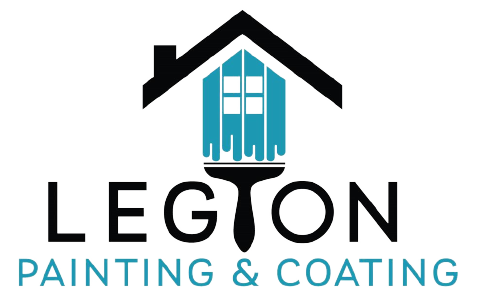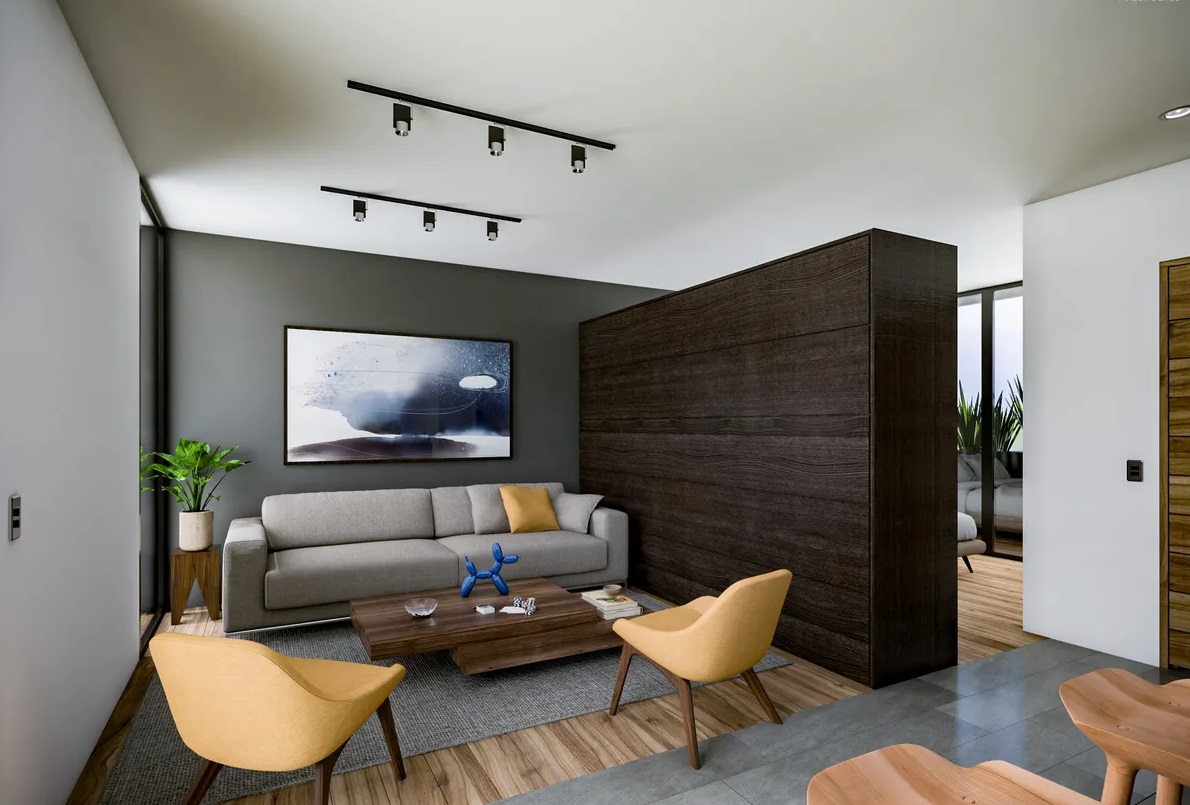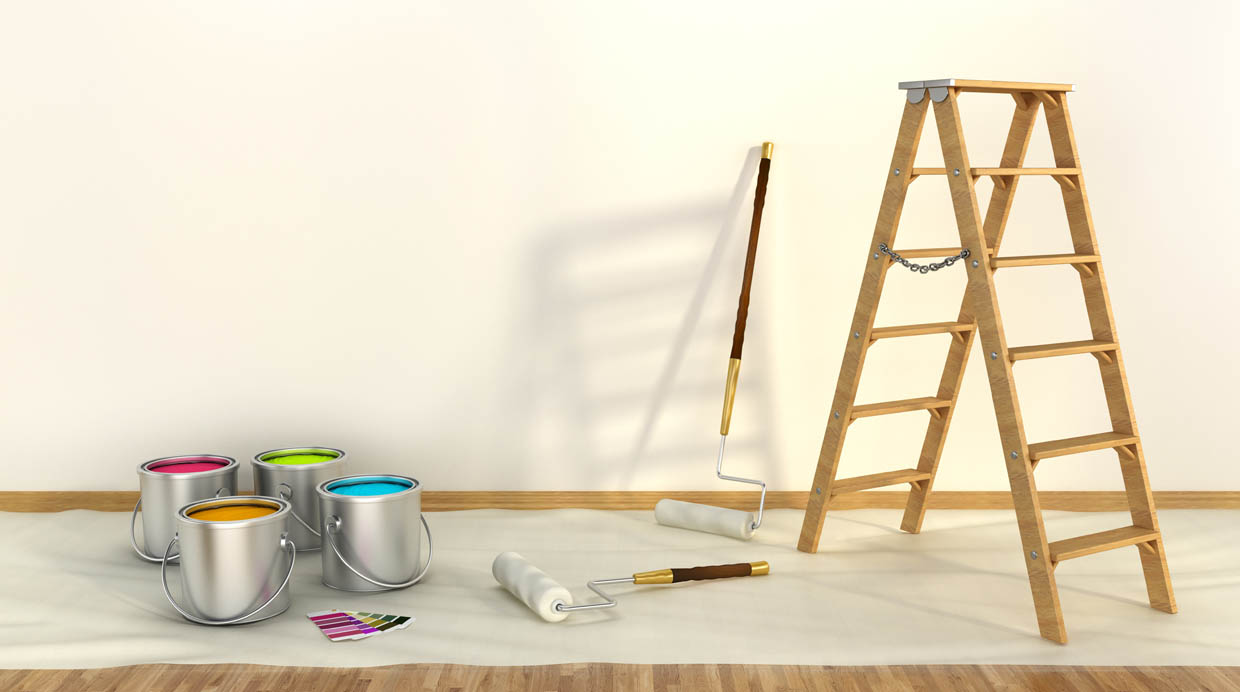The smart choice and application of interior painting techniques can make a significant difference in the perception of size and spaciousness within a room. Let’s explore in more detail the strategies and methods to effectively use painting to visually enlarge spaces in a more profound way.
Creating Spaciousness with Colors and Painting Techniques
Smart Choice of Colors:
- Light and Neutral Tones: Light and neutral colors like white, beige, light gray, or pastel shades can visually expand a space by reflecting light. These tones make walls seem more distant, creating a sense of openness and luminosity. Additionally, a technique that can visually enlarge the space is using different shades of the same color on walls, ceilings, and moldings, eliminating visual divisions, making the room appear larger and uniform.
- Monochromatic Walls: Maintaining a similar color palette on walls, ceilings, and moldings can eliminate visual divisions, making the room seem larger and more uniform. This technique creates a sense of continuity and spaciousness.
Visual Effects with Painting Techniques:
- Vertical Stripes: Painting vertical stripes on walls can create the illusion of greater height, resulting in ceilings that seem taller and, consequently, a more expansive space. Vertical stripes are an optical technique that tricks the human eye and suggests increased room height.
- Gradient Walls: Applying a color gradient technique on walls, from lighter tones at the top to darker tones towards the floor, can generate a sense of depth and spaciousness in the room. This technique simulates visual perspective and creates a feeling of expansion.
Play of Contrasts and Depth:
- Strategic Use of Dark Colors: Contrary to popular belief, using dark colors on some walls can provide depth to the space if combined with lighter colors and applied moderately. This can create an interesting contrast that makes highlighted areas seem farther away, generating visual depth.
- Painting Moldings and Baseboards: Painting moldings and baseboards in a lighter tone than the walls can create a “floatability” effect, making the walls appear taller and the space more expansive. This technique adds dimension and visually elevates the walls, making the ceiling seem higher.
7 Additional Tips to Visually Expand Spaces through Interior Painting Techniques:
- Use Satin or Semi-Gloss Paint Finishes: Paints with satin or semi-gloss finishes reflect light more effectively than matte paints, contributing to creating a feeling of brightness and spaciousness in the space. Applying this type of finish on walls can achieve a reflective effect that makes the room seem more expansive.
- Paint the Ceiling with a Lighter Color than the Walls: Opting for a ceiling in lighter tones than the walls can give the impression that the ceiling is higher and the room is more spacious. This visual trick decreases the feeling of confinement that low ceilings can sometimes generate.
- Strategic Use of Mirrors: Placing mirrors on strategic walls can create the illusion of greater depth and extension in a room. Mirrors reflect light and the surroundings, adding an additional dimension to the space and making it appear larger.
- Maintain Visual Consistency: Maintaining consistency in interior design contributes to a sense of spaciousness. Avoiding drastic contrasts or too many visual divisions can help maintain harmony and a sense of flow in the space.
- Strategic Lighting: Proper lighting is crucial to highlight painting techniques. Combining natural and artificial lighting can enhance the perception of spaciousness. Lights directed at the walls can enhance colors and textures, creating a more spacious ambiance.
- Use Patterns Carefully: Patterns can be effective in adding visual interest but it’s essential to use them moderately in small spaces. Opting for subtle patterns of the right scale can add depth without overwhelming the space.
- Remove Visual Obstacles: Keeping the space clear and avoiding excess furniture or accessories can help maximize the perception of space. Less visually congested spaces give a sense of spaciousness and freedom.
By integrating these additional recommendations with the previously mentioned techniques, a more expansive and welcoming interior environment can be created, making the most of every corner of the available space.
Conclusion
The strategic application of painting techniques can transform the perception of interior spaces. Careful choices of colors, combinations, and methods can influence the visual perception of a room. By intelligently and creatively applying these techniques, it’s possible to maximize the sense of spaciousness and luminosity in small or confined rooms. Painting not only beautifies but also can deceive the eye, making spaces feel larger, comfortable, and inviting.





